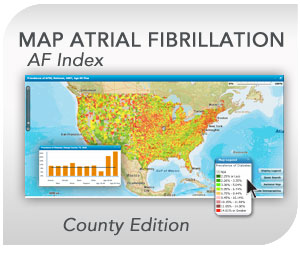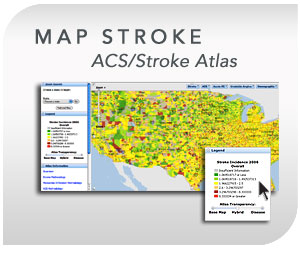Stroke Reports
Saturday, September 28th, 2013

CDC: September 26, 2013 Introduction Quality improvement collaboratives are a popular model used to address gaps between evidence-based practice and patient care. Little is known about use of such collaboratives in emergency medical services, particularly for improving prehospital stroke care. To determine the feasibility of using this approach to improve prehospital stroke care, we conducted […]
Stroke Reports
Saturday, September 28th, 2013

STROKEAHA: September 24, 2013 Background and Purpose—Previous overt stroke and subclinical stroke are frequent in patients with stroke; yet, their clinical significance and effects on stroke outcome are not clear. We studied the burden and outcome after acute ischemic stroke by prevalent ischemic brain disease in a national registry of hospitalized patients with acute stroke. Methods—Patients […]
Stroke Reports
Saturday, September 28th, 2013

J NeuroIntervent Surg: September 23, 2013 Stroke center designation is an integral component of maintaining the systems of care for cerebrovascular diseases.1 Organization of hospitals into efficient vehicles of healthcare delivery helps improve clinical outcomes.2 The approval of IV tissue plasminogen activator (tPA) for acute ischemic stroke (AIS) highlighted the need for specialized stroke centers able to quickly […]
Stroke Reports
Saturday, September 28th, 2013

AHA Stroke: August 1, 2013 Background and Purpose—Mechanical thrombectomy using stent retriever devices have been advocated to increase revascularization in intracranial vessel occlusion. We present the results of a large prospective study on the use of the Solitaire Flow Restoration in patients with acute ischemic stroke. Methods—Solitaire Flow Restoration Thrombectomy for Acute Revascularization was an international, multicenter, […]
Stroke Reports
Saturday, September 28th, 2013

AHA Stroke.: July 30, 2013 Background and Purpose—Although studies have linked types of fatty acids with coronary heart disease, data on individual fatty acids and risk of ischemic stroke are limited. We aimed to examine the associations between serum fatty acid concentrations and incidence of ischemic stroke and its subtypes. Methods—We conducted a prospective case–control study nested […]
Stroke Reports
Saturday, September 28th, 2013

STROKEAHA: September 19, 2013 Background and Purpose—There is evidence that high-volume hospitals may produce better patient outcomes. We aimed to identify whether there were any associations between hospital thrombolysis volume and speed of thrombolysis (tissue-type plasminogen activator [tPA]) administration in patients with ischemic stroke. Read more
Stroke Reports
Monday, September 23rd, 2013

NeuroIntervent Surg: 9/19/13 Outcomes from endovascular therapy for acute stroke are time dependent. Delays in the administration of this therapy have not been extensively studied and no performance benchmarks have been established. There are limited data on the complex factors that can affect these delays. In this review, we discuss the existing literature on the […]
Stroke Reports
Monday, September 23rd, 2013

J Am Heart Assoc.: 9/17/13 Background Intravenous tissue plasminogen activator (tPA) is an effective treatment for acute ischemic stroke if administered within a few hours of stroke onset. Because of this time restriction, tPA administration remains infrequent. Ambulance use is an effective strategy for increasing tPA administration but may be influenced by geographical factors. The objectives […]
Stroke Reports
Monday, September 23rd, 2013

AHA: Cardiovascular Quality and Outcomes 9/1/13 Background—Substantial efforts over the past decade have increased rates of intravenous tissue plasminogen activator (tPA) use in the United States. We sought to determine changes in patient characteristics and rates of tPA use over time among hospitalized acute ischemic stroke (AIS) patients. Methods and Results—We analyzed all AIS patients […]
Stroke Reports
Tuesday, September 17th, 2013

CIRCULATIONAHA: September 12, 2013 Background—Emerging studies suggest that early administration of dual antiplatelet therapy may be better than monotherapy for prevention of early recurrent stroke and cardiovascular outcomes in acute ischemic stroke (IS) and transient ischemic attack (TIA). We performed a meta-analysis of randomized controlled trials (RCTs) evaluating dual versus mono antiplatelet therapy for acute non-cardioembolic […]

































